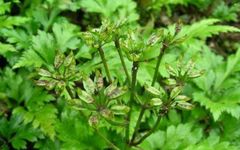Traditional Chinese Medicine Herb: Huang Lian (Coptis chinensis)
Source: This herb is the dried rhizome of the Ranunculaceae family plants Huang Lian (Coptis chinensis), Sanjiao Ye Huang Lian (Coptis deltoidea), or Yun Lian (Coptis teeta). The three are commonly referred to as “Wei Lian,” “Ya Lian,” and “Yun Lian.”
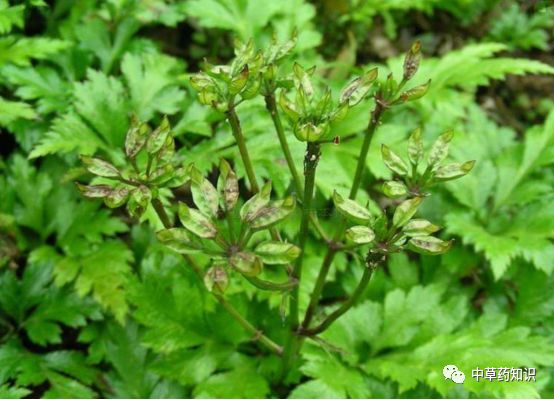
Plant Identification:Perennial herb. The rhizome is yellow and often branched. The leaves are all basal, with a tough, papery texture, 3-parted, with the central lobe having a petiole, ovate-rhombic, deeply lobed, with sharp serrated edges, and the lateral lobes are unevenly deeply lobed. Flower stalks 1-2; inflorescence terminal, with 3-8 flowers, and usually 3 lanceolate, deeply lobed bracts; sepals 5, yellow-green, narrowly ovate; petals linear, lanceolate, with a nectar groove in the center; numerous stamens, with the outer whorl slightly shorter or nearly equal in length to the petals; carpels 8-12, free, with short stalks. The fruit is a capsule with 6-12 segments, with fine stalks. Flowering period is from February to April, and fruiting period is from March to June.Distributed in Sichuan, Guizhou, Hunan, Hubei, and southern Shaanxi. Grows in mountainous forests or shady valleys at altitudes of 500-2000 meters, either wild or cultivated.
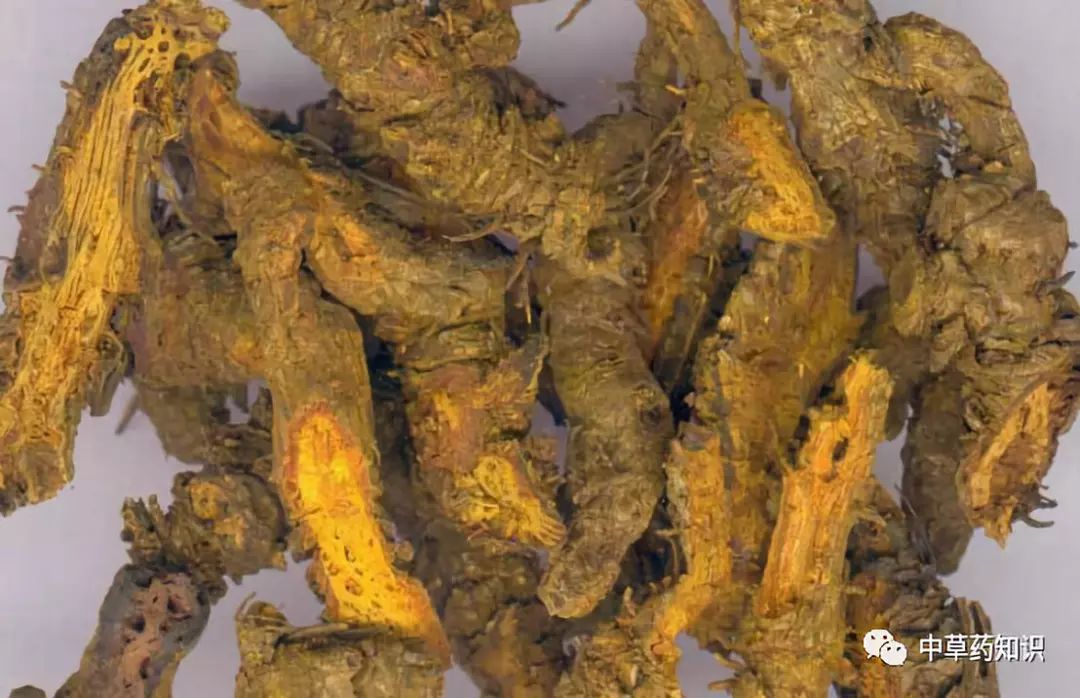
Herb Characteristics:
Wei Lian: Often clustered, usually curved, resembling a chicken’s claw, with single-stemmed rhizomes 3-6 cm long and 0.3-0.8 cm in diameter. The surface is gray-yellow or yellow-brown, rough, with irregular nodular protrusions, fibrous roots, and remnants of fibrous roots; some segments have smooth surfaces like stems, commonly referred to as “crossing the bridge.” The upper part often retains brown scale leaves, and the tip usually has remnants of stems or petioles. Hard texture, uneven fracture surface, with the bark orange-red or dark brown, and the wood bright yellow or orange-yellow, arranged radially, with some hollow pith. Slightly aromatic, extremely bitter taste.
Ya Lian: Usually single-stemmed, slightly cylindrical, slightly curved, 4-8 cm long, and 0.5-1 cm in diameter. The “crossing the bridge” part is longer. The tip has a small amount of residual stem.
Yun Lian: Curved in a hook shape, usually single-stemmed, and smaller in size.
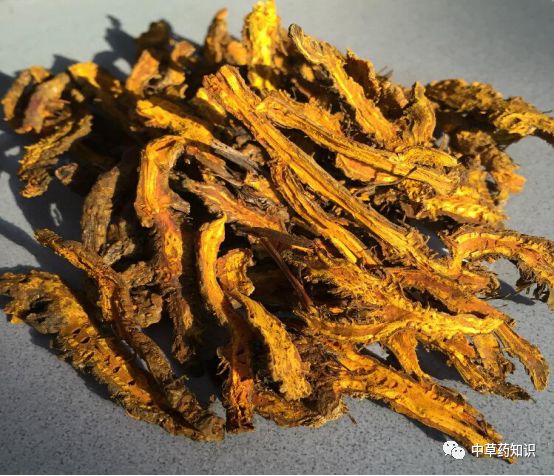
Herb Collection:Harvest in autumn, remove fibrous roots and soil, dry, remove residual fibrous roots, and slice thinly. The best quality has a fresh yellow cross-section and an extremely bitter taste.
Processing: Huang Lian: Remove impurities, moisten, then slice thinly and air dry, or crush when needed. Jiu Huang Lian: Clean Huang Lian slices, mix with yellow wine, stir-fry until dry. Jiang Huang Lian: Clean Huang Lian slices, mix with ginger juice, stir-fry until dry.
Taste and Meridians: Bitter, cold. Enters the Heart, Spleen, Stomach, Liver, Gallbladder, and Large Intestine meridians.
Functions and Indications:Clears heat and dries dampness, drains fire and detoxifies. Used for damp-heat fullness, vomiting with sour regurgitation, dysentery, jaundice, high fever with delirium, excessive heart fire, irritability and insomnia, palpitations, blood heat with vomiting or nosebleeds, red eyes, toothache, diabetes, and carbuncles; externally used for eczema, damp sores, and purulent ear discharge. Jiu Huang Lian is effective in clearing heat from the upper jiao. Used for red eyes and oral ulcers.
Jiang Huang Lian clears the stomach and stops vomiting. Used for cold-heat counterflow, damp-heat obstruction, fullness, and vomiting. Yu Huang Lian soothes the liver and stomach and stops vomiting. Used for disharmony between the liver and stomach, vomiting with sour regurgitation.
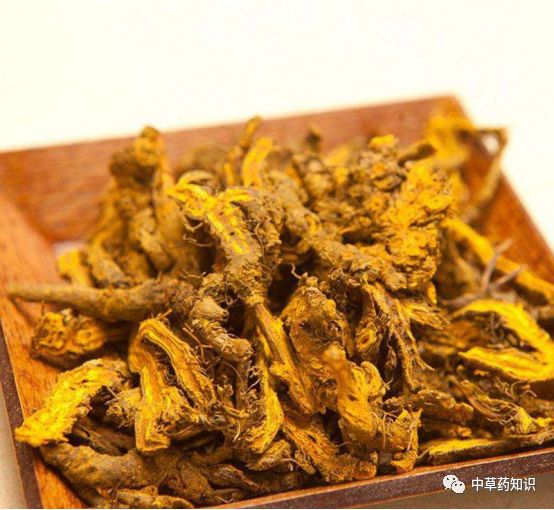
Dosage:2-5 g. For external use, apply an appropriate amount.
Precautions:This herb is extremely bitter and cold; excessive or prolonged use can harm the Spleen and Stomach. It is contraindicated for those with Spleen and Stomach deficiency and cold. Use cautiously for those with Yin deficiency and fluid depletion.
Compatibility:
(1) For treating pain in the stomach due to excessive consumption of hot foods, leading to persistent vomiting: Huang Lian 18 g, Gan Cao (Licorice, roasted) 3 g. Prepare one dose, boil in a large cup of water until reduced to 70%, strain and take warm. (From “Heart Medicine Collection”)
(2) For stomach pain unresponsive to other medications, using cold to treat heat: Huang Lian 18 g, Fu Zi (Aconite, processed, peeled) 3 g. Finely chop. Prepare one dose, add three slices of fresh ginger, one jujube, boil in one and a half cups of water until reduced to one cup, strain and take warm. (From “Medical Truth”)
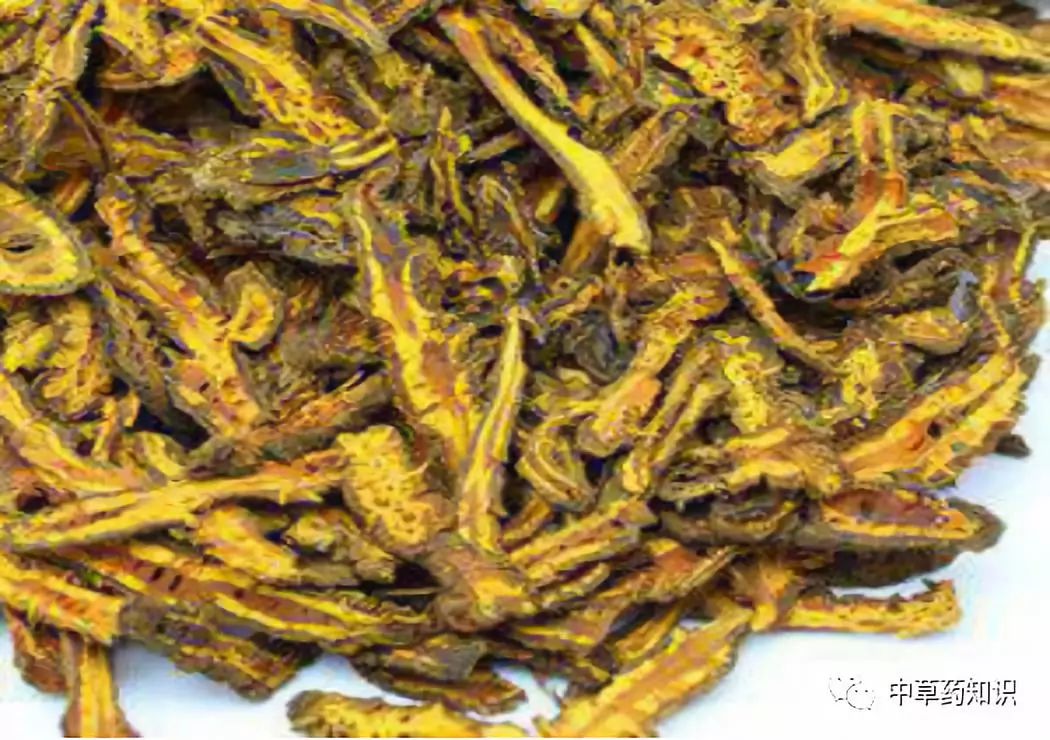
(3) For damp-heat syndrome with persistent vomiting: Huang Lian 0.9-1.2 g, Su Ye (Perilla leaf) 0.6-0.9 g, decoct together and take immediately. (From “Damp-Heat Disease Chapter”)
(4) For hemorrhoids: Huang Lian 60 g, decoct into a paste, then add equal parts of Mangxiao (Glauber’s salt), and Bing Pian (Borneol) 3 g. Apply to hemorrhoids for immediate relief. (From “Danxi’s Key to Treatment”)
(5) For oral ulcers: Huang Lian, Pu Xiao (Sodium sulfate), and Bai Fan (Alum) each 15 g, and Bo He (Mint) leaves 30 g. Grind into a coarse powder, place in the gallbladder of a yellow cow in the twelfth lunar month, hang for two months, then take down. When encountering oral ulcers, grind the medicine finely and apply to relieve heat and saliva, leading to recovery. (From “Complete Book of Jingyue” Huang Lian Pu Xiao)

Compatibility Applications:
(1) Used for draining fire and detoxifying:
Huang Lian combined with Da Huang (Rhubarb): Drains heat, cools blood, and detoxifies. Used for heat accumulation in the stomach, symptoms include fullness under the heart, a soft pulse, and a floating pulse. For heat dysentery, symptoms include abdominal pain with diarrhea, urgency, or unsatisfactory bowel movements, red tongue with yellow greasy coating, indicating damp-heat and fire toxicity obstructing the stomach and intestines; symptoms caused by excessive heat and fire toxicity leading to red, painful eyes, oral ulcers, and swollen gums; symptoms of blood forced to move due to heat leading to rashes, vomiting blood, and mania. Such as in the Da Huang Huang Lian Xie Xin Tang (“Treatise on Febrile Diseases”).
Huang Lian combined with Lian Qiao (Forsythia): Drains fire and detoxifies, disperses lumps and reduces swelling, used for sores, carbuncles, and toxic swellings caused by heat toxicity.
Huang Lian combined with Rou Gui (Cinnamon): Harmonizes the heart and kidney, drains the south and tonifies the north. Used for insomnia due to disharmony between the heart and kidney, palpitations, and inability to sleep, such as in the Jiao Tai Wan (“Han’s Medical Communication”).
Huang Lian combined with E Jiao (Donkey-hide gelatin): Nourishes Yin and clears heat. Used for irritability and insomnia due to Yin deficiency and excessive fire; heat dysentery, and bloody stools. Such as in the Huang Lian E Jiao Tang (“Treatise on Febrile Diseases”).
Huang Lian combined with Zhu Sha (Cinnabar): Clears the heart, drains fire, and calms the spirit. Used for excessive heart fire leading to irritability and insomnia. Such as in the Zhu Sha An Shen Wan (“Treatise on Internal and External Injuries”).
Huang Lian combined with Sheng Ma (Cimicifuga): Clears the stomach and cools the blood. Used for toothache due to stomach fire, bleeding gums, and swollen painful gums. Such as in the Qing Wei San (“Secret Collection of the Orchid Room”).
Huang Lian combined with Gan Jiang (Dried Ginger): Drains heat and relieves fullness, used for both cold and heat, pungent to disperse and bitter to descend. Used for cold-heat counterflow leading to stomach fullness and distension, noisy acid reflux, loss of appetite; symptoms of heat above and cold below leading to vomiting after eating, abdominal pain, and persistent diarrhea. Such as in the Huang Lian Tang (“Treatise on Febrile Diseases”).
Huang Lian combined with Tian Hua Fen (Trichosanthes root): Clears heat, drains fire, and stops thirst. Used for thirst, with frequent oily urination. (From “Cui’s Formulas”).
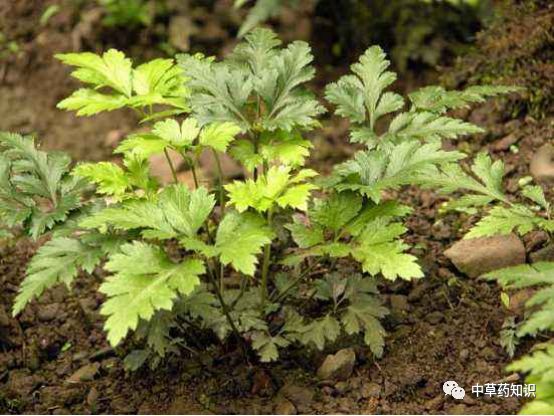
(2) Used for clearing heat and drying dampness:
Huang Lian combined with Long Dan Cao (Gentian): Clears heat, dries dampness, drains fire, and detoxifies. Used for damp-heat dysentery, and red, swollen, painful eyes due to excessive liver fire, or sudden outbreaks of red eyes.
Huang Lian combined with Mu Xiang (Aucklandia): Clears heat, dries dampness, and promotes Qi movement. Used for bacterial dysentery or enteritis, symptoms include diarrhea with abdominal pain, urgency, and tenesmus, with red and white dysentery. Such as in the Xiang Lian Wan (“Taiping Huimin Heji Bureau Formulas”).
Huang Lian combined with Ban Xia (Pinellia): Drains the heart and resolves fullness, transforms phlegm and harmonizes the stomach. Used for damp-heat phlegm obstruction, with symptoms of fullness and oppression in the chest, excessive sticky phlegm, yellow greasy tongue coating, and slippery pulse; symptoms of cold-heat counterflow leading to fullness and pain in the heart area, with tenderness upon palpation. Such as in the Ban Xia Xie Xin Tang (“Treatise on Febrile Diseases”).
Huang Lian combined with Pei Lan (Eupatorium): Clears heat and transforms turbidity. Used for spleen damp-heat, symptoms include sweet, greasy mouth, excessive saliva, and bad breath.
Huang Lian combined with Hu Huang Lian (Picrorhiza): Clears heat, dries dampness, and cools the blood. Used for vomiting blood and blood in the stool.
Huang Lian combined with Hou Po (Magnolia bark): Clears heat, dries dampness, and promotes Qi movement. Used for cholera, summer heat, and other damp-heat conditions leading to chest oppression, nausea, vomiting, and diarrhea. Such as in the Lian Po Yin (“Cholera Treatise”).

